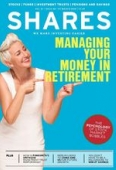Archived article
Please note that tax, investment, pension and ISA rules can change and the information and any views contained in this article may now be inaccurate.
Are bonds making a comeback?

Bonds have had to work hard for investors’ attention in recent years. At a time when equities have been strong (barring the final quarter of 2018) and paying healthy dividends to boot, bonds have seen their spreads squeezed and their attractions dwindle.
UK investors pulled an eye-watering £2bn out of fixed income in 2018, according to figures from the Investment Association.
But as global economies start to recover and central banks talk of raising rates and unwinding quantitative easing (QE), bonds could start to increase in appeal once more.
The Strategic Bond sector was the third best-selling fund sector in December as nervous investors looked for safer havens while stock markets were volatile.
Those who made such a call have likely enjoyed decent gains since. The average strategic bond fund is up 2.2% over the past three months, corporate bonds by 2.4% and high yield also 2.4%.
STELLAR START TO 2019 FOR BONDS
Andrew Jackson, head of fixed income at Hermes Investment Management, says: ‘January and February are usually difficult months for the credit markets but this year they have been stellar.’
Tom Becket, chief investment officer at Psigma Investment Management, adds: ‘High yield bonds have, so far this year, recovered all of the losses they suffered in 2018 and more. But I don’t think this trend will continue, we may have seen all of the gains of 2019 in its first seven weeks.’
There are a number of issues on the horizon for bond investors. Rock bottom interest rates and quantitative easing, where central banks have been buying bonds and other assets to stimulate and increase liquidity in the financial system, have been a huge experiment and there is no telling what the effects will be as they are unravelled.
Those locked into longer duration bonds may particularly suffer; a 1% increase in the yield of a 10-year bond, for example, roughly equates to a 10% loss of capital.
CAUTIOUS INVESTORS COULD FEEL SOME PAIN
Ironically, it is cautious investors who may feel the worst of the pain as they are likely to have the highest allocations to bonds within their portfolios.
Aside from rising rates and central bank policy, there are other issues afoot that are likely to affect fixed income investors, not least the trade tensions between the US and China and, of course, Brexit. Becket is also unconvinced that we have seen the last of QE in the US.
He explains: ‘The Fed has a complete lack of focus on its deficit and we are seeing a lot of Treasury bonds coming to market. If investors start to become concerned about a supply/demand imbalance these could be difficult to sell and the Fed will have to step in.’
Becket is being cautious about which fixed income assets he invests in at the moment, focusing on those with a bias to niche or specialist areas. He likes the TwentyFour Dynamic Bond (B5KPRZ3) fund because of its allocation of mortgage-backed securities – the fund has 11% of its portfolio in asset-backed securities.
Becket says: ‘I also prefer funds which are not too big as it means they can be nimbler. Huge bond funds end up having to be quite passive because they have to participate in the larger new issues that come to market.’
Meanwhile, Terence Moll, chief strategist at Seven Investment Management, says he has been holding fewer bonds in recent years to protect portfolios from capital losses. He says: ‘We would prefer to give up the 1.1% coupon offered by gilts (UK Government bonds) to avoid the potential 5% capital losses. For cautious investors, a permanent loss of capital is the key thing to avoid.’
CENTRAL BANKS AWARE OF RATE HIKE RISKS
Still, it is important to realise that central banks are very aware of the havoc that raising rates too quickly could have on both markets and economies. The US Federal Reserve, for example, has taken two years so far to raise rates from 0.5% to 2.5% and now appears to have paused the operation to avoid spooking markets.
Elsewhere, the pace of change is even slower. The Bank of England has edged rates up in two tiny increments to 0.75%, the European Central Bank has indicated the first of its hikes is unlikely to happen before the summer, while in Japan there is talk of ramping up QE.
Moll adds: ‘We often hear people say that interest rates have gone up and nothing bad has happened to bond markets, but that statement is missing the word “yet”. So far, the pain hasn’t happened but that does not mean the risk has vanished.’
A PLACE FOR BONDS
Bonds may still have a place in many portfolios despite these concerns. It’s worth remembering that often the reason for choosing government bonds, for example, is not for their growth or income prospects but for the protection they can provide in a portfolio.
The fact that default is unlikely is sometimes worth taking a small loss for, as evidenced when Germany Bunds were producing a negative return in 2016 – it was effectively losing investors money to back these bonds but what they wanted was the protection they provide.
Becket says: ‘Investors should be taking a diversified approach, you don’t have to choose between equities and bonds or any other asset class, you can blend them.’
Important information:
These articles are provided by Shares magazine which is published by AJ Bell Media, a part of AJ Bell. Shares is not written by AJ Bell.
Shares is provided for your general information and use and is not a personal recommendation to invest. It is not intended to be relied upon by you in making or not making any investment decisions. The investments referred to in these articles will not be suitable for all investors. If in doubt please seek appropriate independent financial advice.
Investors acting on the information in these articles do so at their own risk and AJ Bell Media and its staff do not accept liability for losses suffered by investors as a result of their investment decisions.
Issue contents
Big News
- News on Vodafone, RELX, GoCompare and more over the past week
- A tale of two founders: Ted Baker and Superdry
- Smithson beats its benchmark in maiden set of results
- What happens next with Brexit and what could it mean for investors?
- New IMI boss hoping to use his Halma-earned growth magic
- Take advantage of price dip in manufacturer Coats

 magazine
magazine









